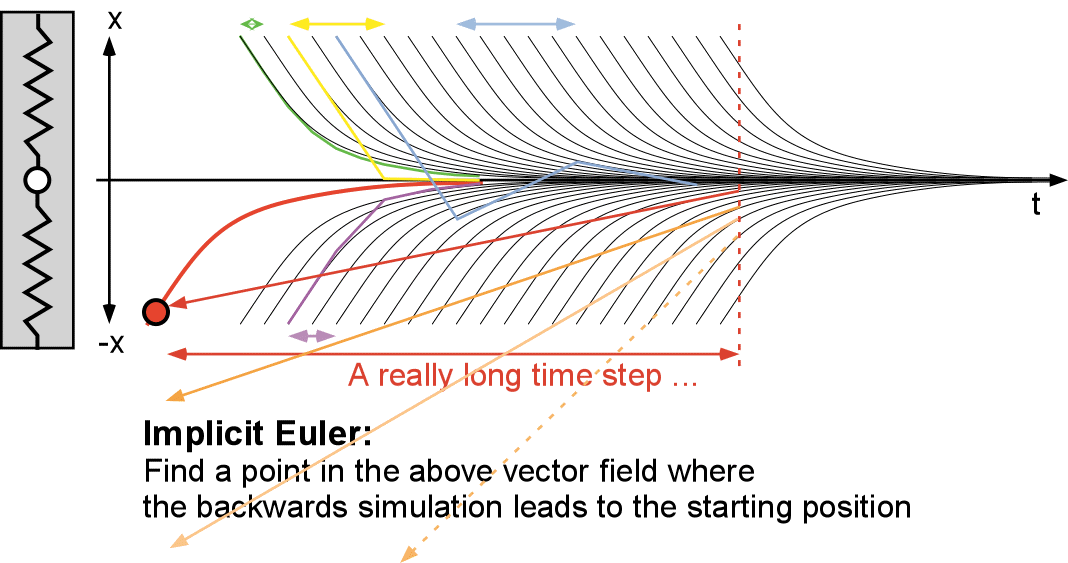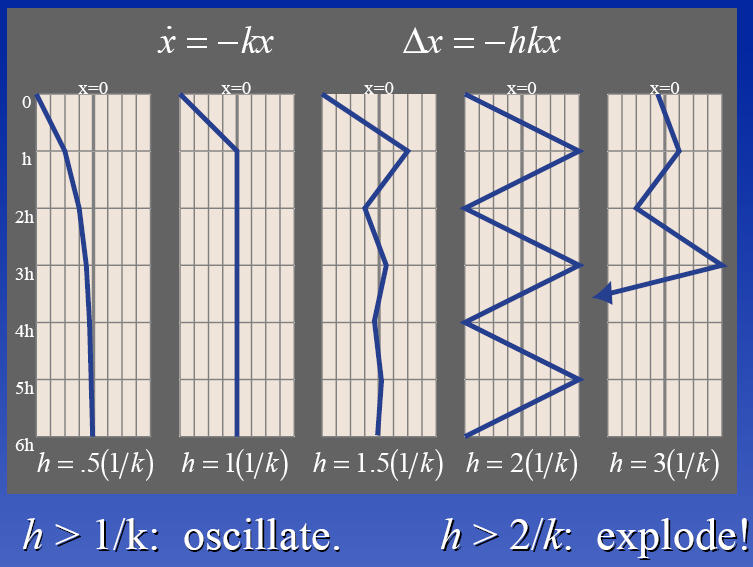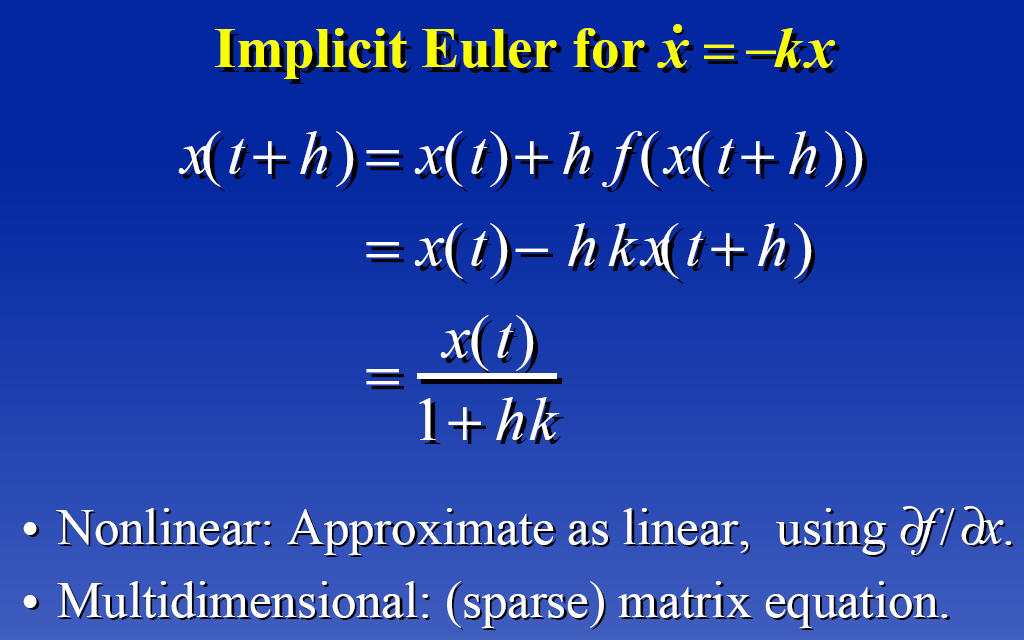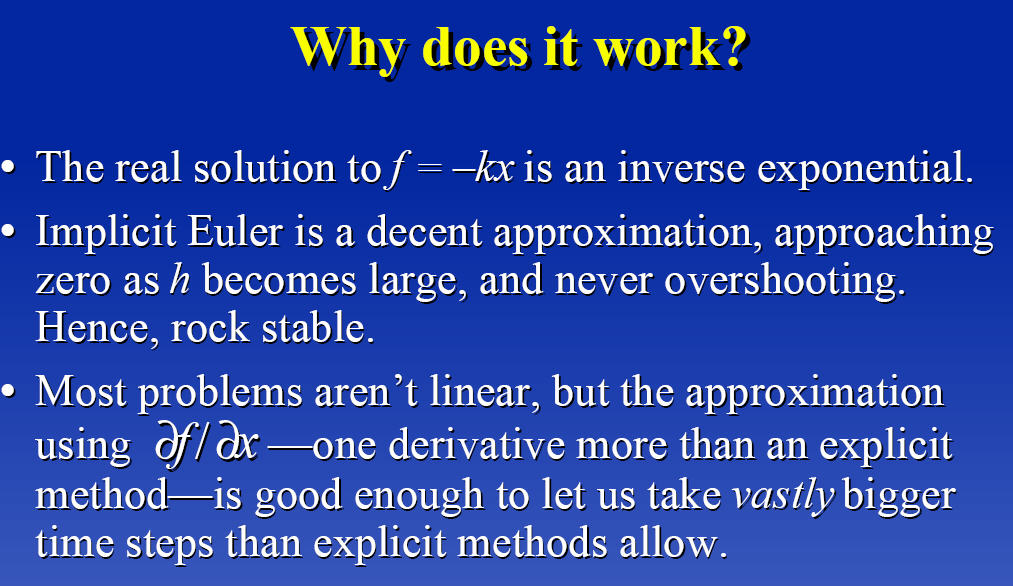Spring Mass Systems: Implicit Methods for Solving ODE
PREVIOUS
< - - - - > CS
184 HOME < - - - - > CURRENT
< - - - - > NEXT
Implicit Euler Method

Key Slides from David Baraff's lecture on
In the forward Euler method one has to carefully control the size of the time-step h
The larger k is, the stiffer the ODE becomes and the smaller the time step h has to be.
Below is an example for a simple one-particle system with a restoring derivative proportional to the deviation from 0.
The charts showing time running downwards in discrete steps of h compare 5 systems with different k:
k = 0.5/h;
k = 1/h; k =
1.5/h; k =
2/h; k = 3/h;

If you must deal with a system with stiff ODEs, use an implicit method;

For our simple one-particle system with a restoring force, this results in:

This involves more computation,
but in this case we can take arbitrarily large time steps:

Some intuitive insight why this works:

To Learn More:
Andy Witkin and David Baraff: "Physically Based Modeling: Principles and Practice"
http://www-2.cs.cmu.edu/~baraff/sigcourse/index.html
Grinspun, Hirani, Desbrun, and Peter Schroder: "Discrete Shells," SCA 2003
PREVIOUS
< - - - - > CS
184 HOME < - - - - > CURRENT
< - - - - > NEXT
.




